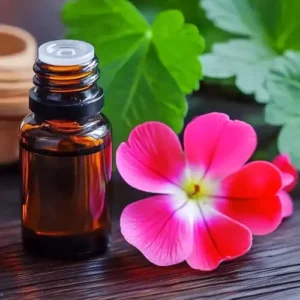Cystitis is a bacterial infection of the bladder or lower urinary tract. Women tend to be more at risk of this condition, especially those that are pregnant and women going through menopause. However, men and children are also at risk of being infected with this disease. One in every five women in the U.K will be afflicted by cystitis during their lifetime; and while this condition can be painful, it does not cause any long-term problems.
The main types of cystitis is known as bacterial cystitis. However two other, much less common forms, do exist. They are: Radiation Cystitis (Hemorrhagic Cystitis) and Chemotherapy Induced Cystitis. All are types of water infection.
- Bacterial Cystitis (BC) – this is the main type.
- Radiation Cystitis (Hemorrhagic Cystitis) – occurs as a result of the treatment of cancer of the pelvic organs.
- Chemotherapy Induced Cystitis – immunotherapy to the bladder may cause this type of cystitis.
All three types of infections can be detected by a Home Test Kit for Cystitis.
What causes Cystitis?
Bacterial cystitis is brought on by germs, normally bacteria that get into the urethra and then enter the bladder. These bacteria can result in infection, mainly in the bladder. Women have a tendency to get infections more easily than men because their urethra is shorter and closer to the anus. This is why, women tend to get an infection after sex or when wiping the bottom from back to front, when inserting tampons, or through the use of a diaphragm for birth control.
If the bladder is not emptied fully this may also cause bacteria to increase, this is particularly common in expectant mothers due to the pressure on the pelvic area. Women going through menopause are also more at risk of suffering from a urinary tract infection.
Sexual intercourse may cause germs to get into the urethra regardless of good personal hygiene; however poor personal hygiene increases the risk. Most women experience increased episodes of cystitis at the beginning of menopause, because of the reduction in mucus, and without the mucus, bacteria tend to increase, which increases your risk of infection.
Men with an enlarged prostate gland are more vulnerable to being infected with cystitis, for the reason that the prostate stops the bladder from fully emptying. If the bladder is not emptied completely, the small drop left behind may hold bacteria (a contributing factor to cystitis).
Symptoms associated with Cystitis
- Burning and pain on passing urine
- Frequently passing urine
- Passing only small amounts of urine at a time
- An urgency to pass urine
- Foul smelling urine
- Painful sexual intercourse
- Lower back pain
- High temperature
- Dark or cloudy urine
- Urine that contains blood
- Pain in the lower abdomen over the bladder
These symptoms may also be an indication of a different type of infection, for instance a sexually transmitted disease. Should you be concerned about any symptoms you have, it is best to pay a visit to your doctor.
How is Cystitis diagnosed?
Whilst uncomplicated urine infections can safely be treated without much or any investigation, it is often necessary to do tests to determine the type of bacteria triggering the infection. Normally, the best way to diagnose Cystitis is through a urine infection test. However, for a more detailed investigation, the urine will be sent to the laboratory. The urine sample will then be tested to detect if there is any bacteria present. Women who repeatedly suffer from infection may require additional tests, for instance, x-ray or ultrasounds to check for underlying causes.
How can Cystitis be treated?
Mild cases of cystitis are usually successfully treated by drinking plenty of water or making use of over-the-counter medications to help flush out bacteria when urinating. Avoid beverages that contain caffeine like coffee. Bicarbonate of soda is also a good home remedy. Use one teaspoon in half a glass of water, 2-3 times per day. This treatment is not recommended for patients with heart problems or those with high blood pressure.
If you have any pain or discomfort, wrap a hot water bottle inside a towel and place it on your lower back to help relieve the pain. You may also take over-the-counter painkillers to relieve the pain, first seek advice from your pharmacist.
If by then your cystitis still exists, its best to consult your doctor as you may need antibiotics. Men, children and pregnant women should always get the advice from a doctor. In case your symptoms do not improve within a few days after you have started treatment; it is advisable that you return to your doctor.
In situations where women are prone to repeated attacks of infection for a reason that are unable to be remedied, they are sometimes given a low dose of antibiotics daily for a long time period in an effort to keep the urine clear of infection.
D-mannose is a natural product that has worked for many people, and can be a successful way of treating cystitis without having to resort to antibiotics.
What can I do to prevent further episodes of Cystitis?
In order to prevent future infections it is recommended that you avoid anything that may lead to irritation which includes:
- Bubble bath and bath oils
- Tight jeans and trousers
- Deodorant, talcum powder, or perfumed soap in the genital area.
- Nylon tights and underwear (opt for cotton underwear instead).
In addition to avoiding irritants, it is important to practice good hygiene. This includes wiping from front to back after using the toilet to prevent the spread of bacteria into the urethra. Drinking plenty of water and urinating frequently can also help flush out any bacteria that may be present in the bladder.
It is also recommended to avoid holding in urine for long periods of time, as this can increase the risk of infection. Finally, practicing safe sex by using condoms and maintaining good genital hygiene can also help prevent the spread of bacteria that can cause cystitis. If you experience recurrent episodes of cystitis, it is important to talk to your doctor about possible underlying causes and treatment options.
What other self-help strategies are available?
- Always wipe from front to back
- Empty your bladder before and after sexual intercourse
- Drink at least 8 glasses of water a day
- Avoid spicy food, coffee, alcohol, tomatoes and citrus fruits.
- Increase your intake of cranberry juice, at least to 300ml per day.
- Wash your genital area twice daily.
- Take a shower instead of a bath.
- Empty your bladder when you feel the need to
What Happens If Cystitis Is Left Untreated?
Sometimes the same symptoms of cystitis can recur over a long time period if not treated. This is referred to as chronic cystitis. Chronic cystitis occurs when the first course of antibiotic treatment has not been completed, which causes some of the germs to remain, or when some bacteria have a resistance to treatment. If you have any abnormalities in the urinary tract, you may also suffer from chronic symptoms of cystitis.
Leaving cystitis untreated can lead to various complications, some of which can be severe. If left untreated, cystitis can spread from the bladder to the kidneys, causing a kidney infection (pyelonephritis). Kidney infections can be dangerous and require immediate medical attention as they can lead to permanent kidney damage or even life-threatening complications.
Furthermore, recurring bouts of cystitis can cause scarring and thickening of the bladder walls, which can reduce the bladder’s capacity to hold urine, leading to urinary retention and other bladder problems. In some cases, untreated cystitis can also lead to sepsis, a severe bacterial infection that can cause organ failure and death. Therefore, it is essential to seek medical attention if you suspect you have cystitis to prevent any complications that may arise from leaving it untreated.
Testing for Cystitis with Urine Infection Test Strips
These test strips are a quick and easy way to check if you might have a urinary tract infection, or UTI. UTIs happen when germs get into your urinary tract, which includes your bladder and kidneys. UTIs are much more common in women than men.
The most common symptom of a UTI is feeling like you need to pee all the time, even if not much urine actually comes out when you go. It might burn or hurt when you pee. Your urine might look cloudy or smell bad. You might also have pain in your lower back or fever if the infection has spread to your kidneys.
To use the test strips, you first pee into a clean cup. Then you dip the end of the strip in the urine for a couple seconds. The strip will change color if signs of infection are present. After 60 seconds, you compare the strip to a color chart that comes with it to see the results.
The test strip checks for 3 signs of infection:
- Leukocytes – These are white blood cells that your body sends to fight infection. If the strip turns dark pink or purple, it means leukocytes were found.
- Nitrites – There are normally no nitrites in urine. Bacteria in a UTI convert nitrates to nitrites, so pink color means nitrites were found.
- Blood – Blood in urine can mean the infection is severe. The strip will change color if blood is detected.
If any of those 3 show up positive, it’s likely you have a UTI. The biggest benefit of the strips is you can test yourself at home. You’ll know if you need to see a doctor for antibiotics. Without the strips, you’d have to go to the clinic and give a urine sample there.
These strips aren’t perfect – false results are possible. A negative result doesn’t guarantee you’re infection-free. So if you still have symptoms, see your doctor even if the strip test is negative. But overall the strips give a good initial check for UTIs. They’re an easy first step to see if you need further testing and treatment.
Can I Find Help with Cystitis?
Help is at hand if you regularly suffer from cystitis. The Cystitis and Overactive Bladder (COB) Foundation offers help to people with all types of cystitis, overactive bladder and continence issues. Visit their website for more details of the excellent work they carry out.
Photo by Sasun Bughdaryan on Unsplash
Zoom Health is a leading UK supplier of Home Health Tests and Earplugs
This post was originally published in November 2017. It was last updated in June 2023.






